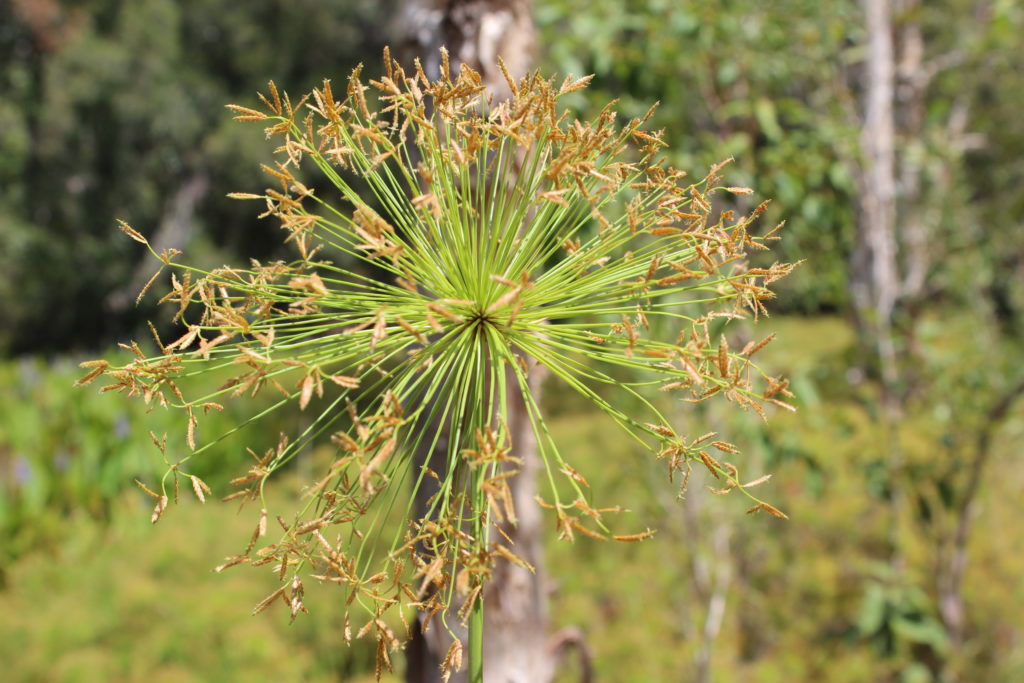Over the last few years Dwarf Papyrus (Cyperus prolifer) has been increasing in its occurrence and density throughout the Redland City boundaries. It has now been identified as occurring in most of the rural areas within swamps, wetlands, drainage lines, water bodies and waterways.
This weedy sedge is native to Africa and was historically used to make paper. The rhizomes were also used as a food source, although they are not very palatable. It has been extensively cultivated as an ornamental pond plant in Australia and is readily sold in many nurseries as a water garden feature. As with many ornamental plants, it marched its way beyond the garden fence and found its way into the landscapes of Queensland and northern NSW.

In the natural environment Dwarf Papyrus invades wetland areas and is a smaller version of the other invasive sedge, Papyrus (Cyperus papyrus). Dwarf Papyrus is a perennial plant that likes to grow in sunny, damp or inundated areas with still or slow-moving water. Dwarf Papyrus can grow to 60cm high, usually in thickets as shown in the header photo. Like many sedges, the leaves of Dwarf Papyrus are reduced to sheaths at the base of the stem.
Dwarf Papyrus reproduces via its rhizomes, which spread along the ground creating large colonies of plants that are very tough and hard to remove once having taken hold of an area. It can also reproduce via seed, hence the species name ‘prolifer’ meaning a prolific producer. The flowering stems are rigid and upright with large, spherical shaped seed-heads. Each seedhead has a grouping of over 100 flowering rays each containing a number of green turning reddish-brown florets as they mature.
Why do we need to control this weedy cyperus? Well, if it is allowed to reproduce it will out-compete native species in a short period of time and change the natural ecosystem making it more difficult for both the native flora and fauna that would have once thrived in the area.
Manual removal of Dwarf Papyrus when in small populations is the easiest and best control method. However, once the plant has spread to form a dense thicket around a waterbody or waterway the best control method is to hand weed around native sedges and rushes such as Woolly Frogmouth, and then conduct a selective spray treatment with herbicide formulated for use in aquatic environments such as Roundup Biactive® or Weedmaster® DUO. A follow-up treatment in 3-4 weeks and long-term monitoring and follow-up treatments will be required to assure longterm control of this invasive weed.
Some success has also been achieved by continuous slashing around the edges of infestations. However, this can result in seed spread if done when the seed is viable. It can also cause erosion around waterbodies/waterways if the area does not regenerate quickly after slashing.
As with all weeds, but especially aquatic ones, early detection and control is paramount to avoid the difficult process of controlling an established infestation.
Article by Maree Manby
Land for Wildlife Officer
Redland City Council
